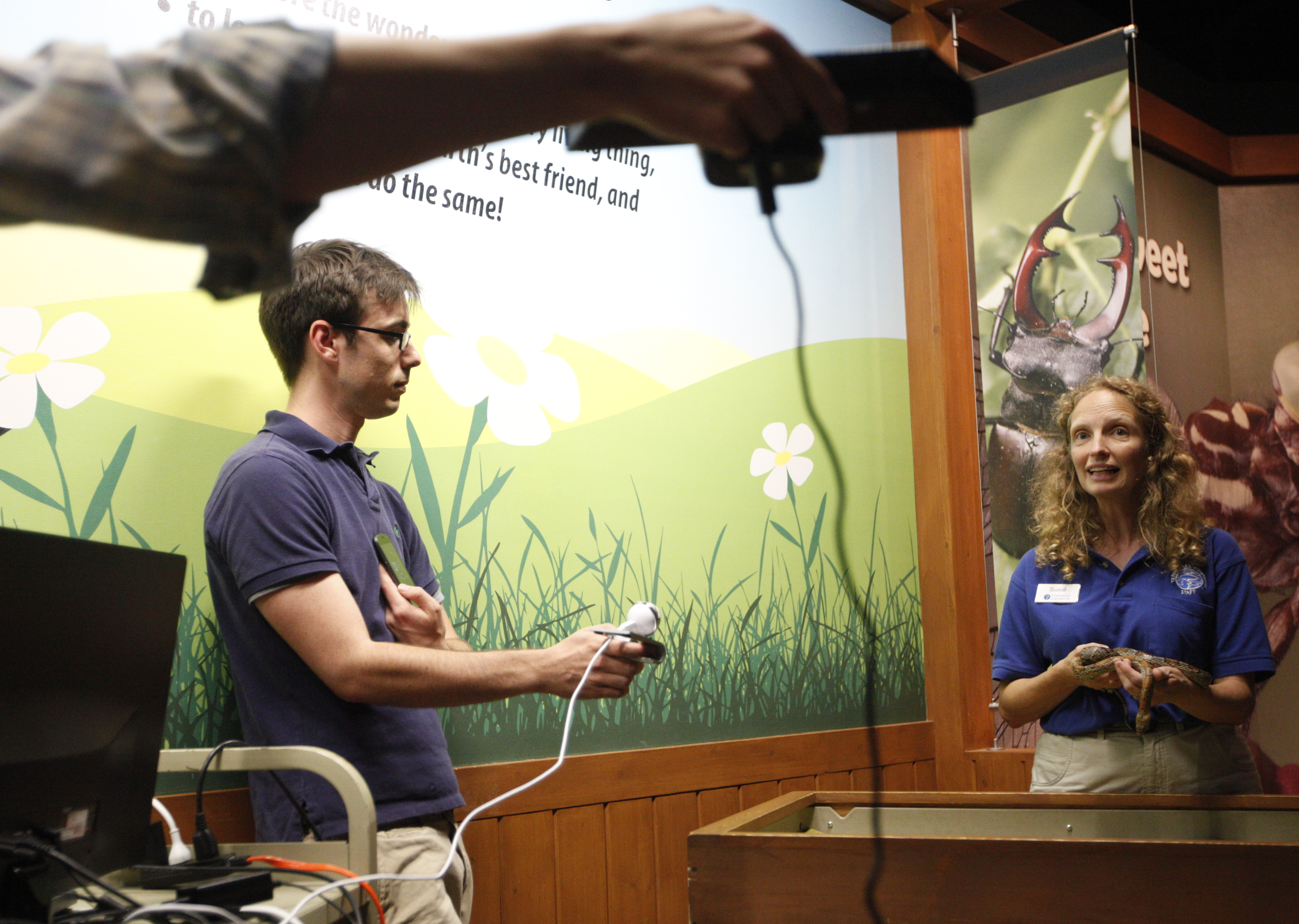VIDEO
This story is featured in today's TimesFreePress newscast.
Why it's important• First live demonstration of streaming 3D in the world, broadcast from Chattanooga to Chicago• Chattanooga-based Engage 3D used a $50,000 Mozilla grant to build the technology• The open-source program, which requires only a hacked Kinect sensor and an Apple mini computer, will be available for anyone to useSource: Engage 3DHow it works• A hacked Microsoft Kinect sensor sents out infrared points of light, which bounce back and form a 3D model of the room and everything in it.• A 2D video camera overlays the image of the room on top of the 3D model.• Using a mouse, viewers in another city can rotate around the room, looking at what's happening from different angles.• Streaming at 60 frames per second, or 300 megabits per second, the technology requires an ultra-fast broadband connection, like those available in ChattanoogaSource: Engage 3D
The rehearsals are done, the camera equipment has been tested.
It's a little dark in the Ranger Rick gallery of the Tennessee Aquarium, but light isn't an issue for this team of videographers and software engineers.
They're more worried about bandwidth.
"To send this sort of data requires a really big connection," said Lindsey Frost Cleary, development director for Engage 3D.
The group is preparing to broadcast the world's first live proof of real-time, 3D streaming to an audience in Chicago from Chattanooga. They're a little nervous.
Using a reprogrammed Kinect camera lifted from Microsoft's Xbox 360 gaming system, they've created a way to allow a computer in Chicago to broadcast a live 3D image of senior educator Susie Grant and the writhing corn snake she holds in her hand.
The rig doesn't look very high-tech. A piano black Kinect sensor sits on top of an Apple mini computer, with a tangle of blue and yellow cords running along the floor into a wall next to the hand sanitizers.
There's no fancy steadicam mount or wheeled tripod. Instead, Paul Muren grabs the Kinect sensor with his hands and holds it at the right angle for the infrared rays to do their magic.
The system works much the way animated characters are created for Pixar movies or video games -- only it happens instantaneously. The team's hacked Kinect sensor broadcasts an array of infrared points into the Ranger Rick gallery, which bounce off surfaces, people and snakes and report back to the computer where they are in space. The resulting model is called a "point cloud."
At the same time, another camera mounted in the device records a regular two-dimensional image, which it "paints" onto the 3D models created by the infrared sensor.
All together, it generates 60 frames per second, or 300 megabits per second of uncompressed 3D data that requires ultra-fast broadband to transport to Chicago. The next version of Kinect, set to launch in time for Christmas, will generate up to two gigabits per second of high resolution data.
Normally, they don't worry about how to move the data around because they live in the Scenic City, which features citywide access to gigabit Internet, said Bill Brock, executive director of Engage 3D and computational engineer at Sim Center Enterprises.
"We were testing locally in Chattanooga pretty easily," Brock said.
 An Xbox Kinect is used as a camera as James McNutt, left, holds a microphone and senior educator Susie Grant talks about a corn snake during a live 3D broadcast from the Ranger Rick Gallery on Tuesday at the Tennessee Aquarium. Engage 3D live-streamed the Ranger Rick demonstration to the U.S. Ignite conference in Chicago using the Xbox Kinect as a camera.
An Xbox Kinect is used as a camera as James McNutt, left, holds a microphone and senior educator Susie Grant talks about a corn snake during a live 3D broadcast from the Ranger Rick Gallery on Tuesday at the Tennessee Aquarium. Engage 3D live-streamed the Ranger Rick demonstration to the U.S. Ignite conference in Chicago using the Xbox Kinect as a camera.But to get the connection to Chicago took the cooperation of the Aquarium, city-owned utility EPB, the University of Tennessee at Chattanooga, and several similar institutions in Chicago, he said. Until gigabit speeds are available everywhere, Tuesday's tech demo will only be usable within places like Chattanooga, or between cities with gigabit infrastructure.
"Just to get that connection there was a big deal," Brock said.
With a few minutes left until show time, the team shooed away the groups of children swooning over the harmless snake and began the presentation.
"It's always going to swallow the rodent's head first, because that's the safest way," Grant said.
Apart from a few technical hiccups in Chicago that forced Grant to restart her presentation, everything went well, Brock said.
"People are amped," he said. "They want the source code, they want to check it out and use it in their own code."
That's good, because representatives from the Mozilla foundation -- which has bankrolled the project to the tune of $50,000 -- were in attendance in Chicago at the U.S. Ignite summit. Among several Mozilla open source projects under way, the breakthrough will be free for the world to use, even as the team continues to fine tune its methods, and find a way to put the technology to good use.
"I think the exciting thing is to do this with a piece of technology that people already have in their home," said Frost Cleary. "It's rendered in browser, so if someone can find an educational use for it, then schools won't have to buy any new technology."
First, however, those schools will need to get a gigabit.
Contact staff writer Ellis Smith at esmith@timesfree press.com or 423-757-6315.

